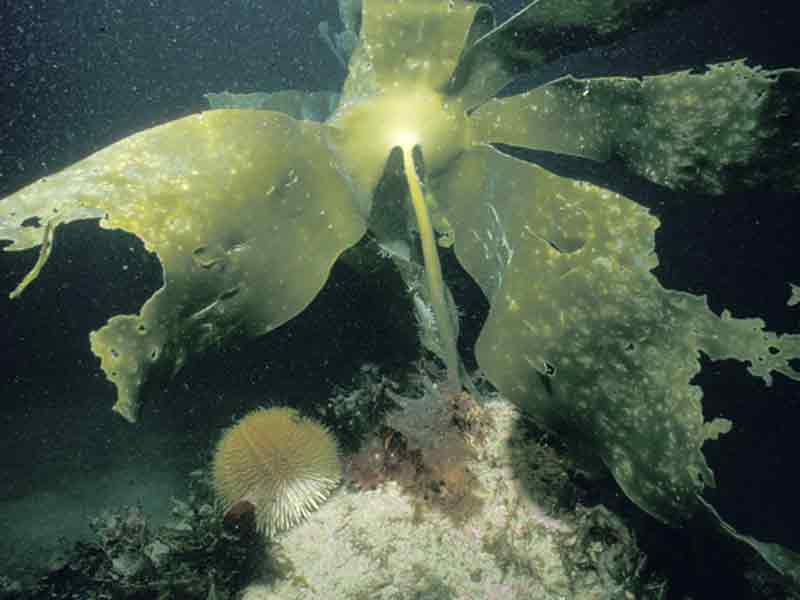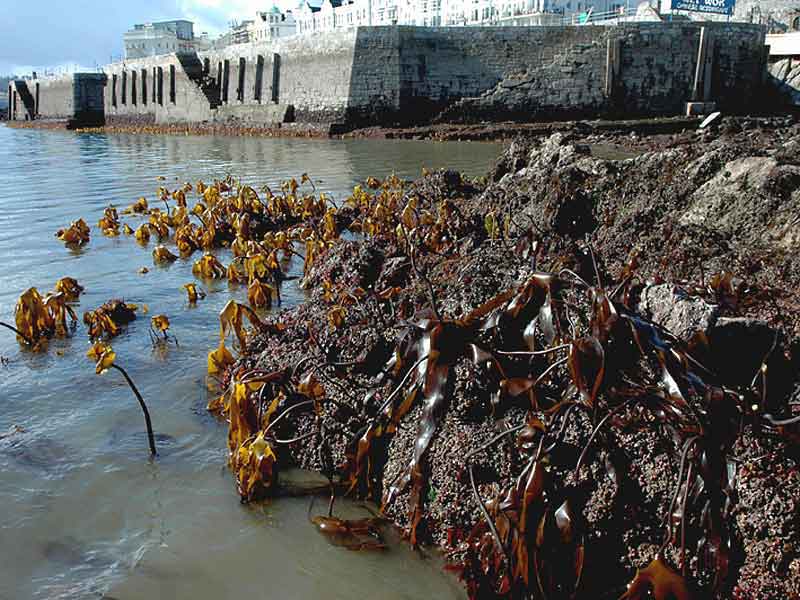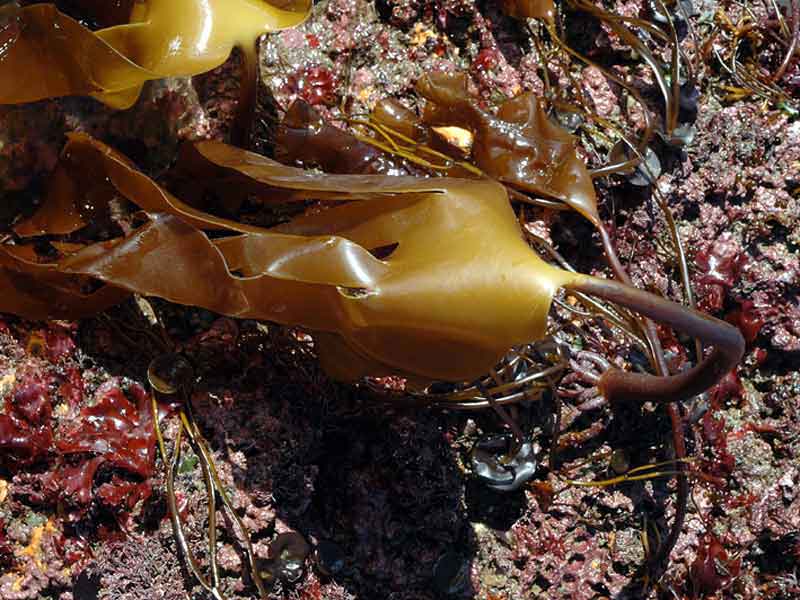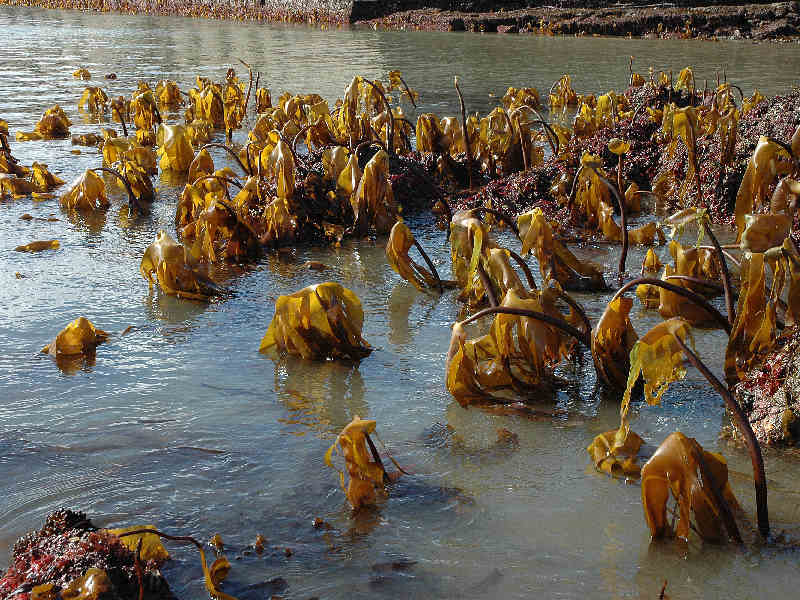Golden kelp (Laminaria ochroleuca)
Distribution data supplied by the Ocean Biodiversity Information System (OBIS). To interrogate UK data visit the NBN Atlas.Map Help
| Researched by | Jenny Smirthwaite | Refereed by | Admin |
| Authority | Bachelot de la Pylaie, 1824 | ||
| Other common names | - | Synonyms | - |
Summary
Description
Recorded distribution in Britain and Ireland
An isolated recording in the Shetland Islands but otherwise found on the coast of south west England including Lundy, the Isles of Scilly, south Devon and Cornwall.Global distribution
NE Atlantic, Mediterranean, SE AtlanticHabitat
The species is found on rocks from the low water spring tide level to the shallow subtidal. In some locations Laminaria ochroleuca may be found in deeper water. For example, in the Isles of Scilly a park of Laminaria ochroleuca is found deeper than Laminaria hyperborea at a depth of about 25 m. The species may occur as mono-specific stands or as mixed stands with other Laminaria species.Depth range
-Identifying features
- Bright yellow patch at base of blade.
- Similar in appearance to Laminaria hyperborea but with a rigid round epiphyte free stipe.
Additional information
NoneListed by
- none -
Bibliography
BMLSS (British Marine Life Study Society), 2002. Jellyfish page [On-line] http://ourworld.compuserve.com/homepages/BMLSS/Moonjell.htm, 2002-07-02
Guiry, M.D. & Nic Dhonncha, E., 2002. AlgaeBase. World Wide Web electronic publication http://www.algaebase.org,
Hardy, F.G. & Guiry, M.D., 2003. A check-list and atlas of the seaweeds of Britain and Ireland. London: British Phycological Society
Howson, C.M. & Picton, B.E., 1997. The species directory of the marine fauna and flora of the British Isles and surrounding seas. Belfast: Ulster Museum. [Ulster Museum publication, no. 276.]
JNCC (Joint Nature Conservation Committee), 1999. Marine Environment Resource Mapping And Information Database (MERMAID): Marine Nature Conservation Review Survey Database. [on-line] http://www.jncc.gov.uk/mermaid
Norton, T.A. (ed.), 1985. Provisional Atlas of the Marine Algae of Britain and Ireland. Huntingdon: Biological Records Centre, Institute of Terrestrial Ecology.
Datasets
Fenwick, 2018. Aphotomarine. Occurrence dataset http://www.aphotomarine.com/index.html Accessed via NBNAtlas.org on 2018-10-01
National Trust, 2017. National Trust Species Records. Occurrence dataset: https://doi.org/10.15468/opc6g1 accessed via GBIF.org on 2018-10-01.
NBN (National Biodiversity Network) Atlas. Available from: https://www.nbnatlas.org.
OBIS (Ocean Biodiversity Information System), 2025. Global map of species distribution using gridded data. Available from: Ocean Biogeographic Information System. www.iobis.org. Accessed: 2025-06-25
Royal Botanic Garden Edinburgh, 2018. Royal Botanic Garden Edinburgh Herbarium (E). Occurrence dataset: https://doi.org/10.15468/ypoair accessed via GBIF.org on 2018-10-02.
Citation
This review can be cited as:
Last Updated: 03/07/2007






